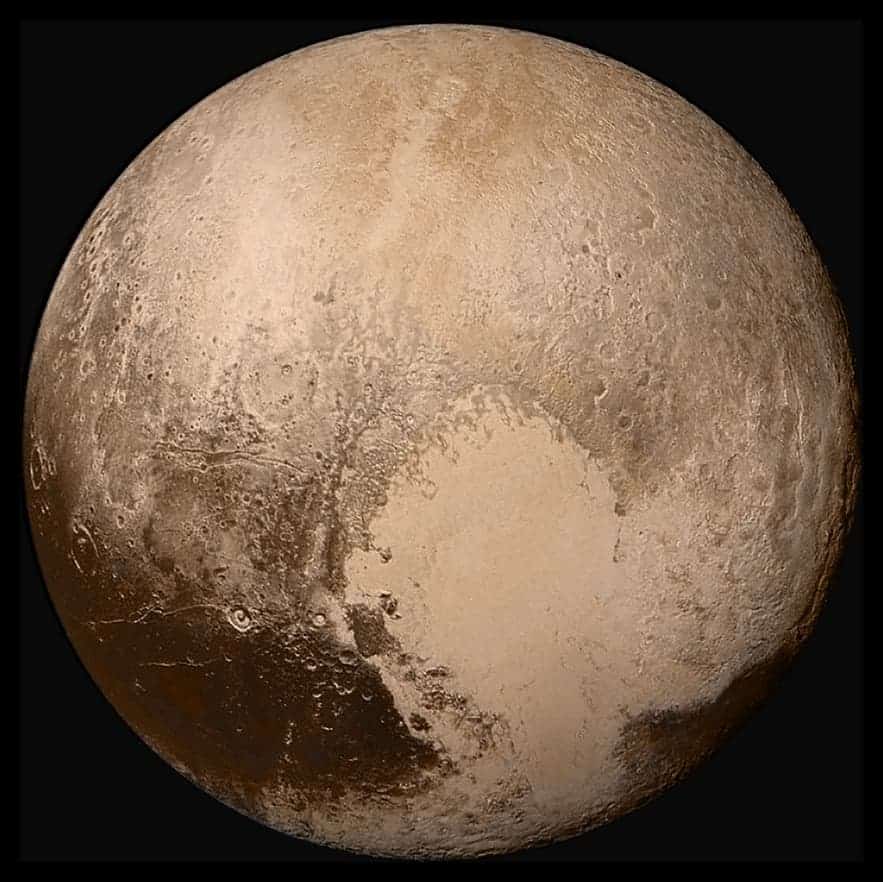
In 2006, the International Astronomical Union (IAU) set forth a new set of guidelines for what constitutes a planet. In a decision that surprised and even infuriated a lot of people, the commission announced that Pluto could no longer be considered a planet, in light of these new guidelines — and, ever since, the scientific community has debated Pluto’s place and status in the solar system.
If it looks like a planet, moves like a planet, then it’s a…
According to a new study, the IAU definition for a planet does not make much sense because astronomers have not used it in their work when discussing planets.
The IAU has been responsible for the naming and nomenclature of planetary bodies and their satellites since the early 1900s. Right at the end of the 2006 Prague General Assembly, members voted that the definition of a planet in the Solar System would be as follows:
A celestial body that (a) is in orbit around the Sun, (b) has sufficient mass for its self-gravity to overcome rigid body forces so that it assumes a hydrostatic equilibrium (nearly round) shape, and (c) has cleared the neighborhood around its orbit.
Pluto orbits the sun in a super-crowded region called the Kuiper Belt, which is jam-packed with asteroids, debris, and other so-called trans-Neptunian objects (TNOs) such as Eris or Sedna. Because it doesn’t clear its orbit, the IAU considered that Pluto didn’t fit criterion (c) and demoted to it to a ‘dwarf planet’ — objects that only meet the first two criteria.
Philip Metzger, a planetary scientist at the University of Central Florida, and one of the main architects of the New Horizons mission that reached Pluto for the first time, is one of the loudest critics of the IAU’s definition.
“It’s a sloppy definition,” said Metzger, who is the lead author of the new study. “They didn’t say what they meant by clearing their orbit. If you take that literally, then there are no planets, because no planet clears its orbit.”
Metzger and colleagues reviewed a myriad of studies published over the past 200 years looking for any instance where the clearing of the orbit was used as a requirement for defining a planet. The authors found only one such mention — a study published in 1802 — which was based on flawed, now-disproven reasoning.
Instead, the researchers found over 100 recent examples where researchers had used the word planet in a way that would violate the IAU definition. “They are doing it because it’s functionally useful,” Metzger said.
“The IAU definition would say that the fundamental object of planetary science, the planet, is supposed to be a defined on the basis of a concept that nobody uses in their research,” Metzger says. “And it would leave out the second-most complex, interesting planet in our solar system.”
Moons such as Saturn’s Titan and Jupiter’s Europa have been called planets by scientists since the time of Galileo. It was in the early 1950s, when Gerard Kuiper published a study that made the distinction between planets and asteroids based on how they formed, that scientists started paying more attention to the division.
However, even this reason is no longer considered a factor that determines if a celestial body is a planet, Metzger says.
And since clearing orbit is obviously not a standard in the scientific literature, it shouldn’t have ever been used in the IAU’s controversial 2006 definition, the authors argue.
“We showed that this is a false historical claim,” said co-author Kirby Runyon, with Johns Hopkins University Applied Physics Laboratory in Laurel, Maryland. “It is therefore fallacious to apply the same reasoning to Pluto.”
If that’s the case, when is an object worthy of being called a planet? The authors of the new study recommend classifying a planet based on its intrinsic properties rather than extrinsic ones that are subject to change, such as the dynamics of a planet’s orbit. Today, the debris and asteroids that fall into Pluto’s path are many, but they may disappear a billion years from now — so they shouldn’t be fundamental to describing a body.
Metzger says that a fundamental criterion to classifying a planet should be whether it’s large enough to allow gravity to mold the object into a sphere.
“And that’s not just an arbitrary definition,” Metzger says. “It turns out this is an important milestone in the evolution of a planetary body, because apparently when it happens, it initiates active geology in the body.”
Modern observations, such as those performed by the New Horizons mission, revealed that Pluto has an active underground ocean, a multilayer atmosphere, organic compounds, and multiple moons.
“It’s more dynamic and alive than Mars,” Metzger says. “The only planet that has more complex geology is the Earth.”
Certainly, this isn’t the last word, but the lively debate is valuable and useful. At the end of the day, even if we might have hurt Pluto’s feelings, we’ll come out of this with a much clearer picture of what a planet looks like.
The findings appeared in the journal Icarus.






